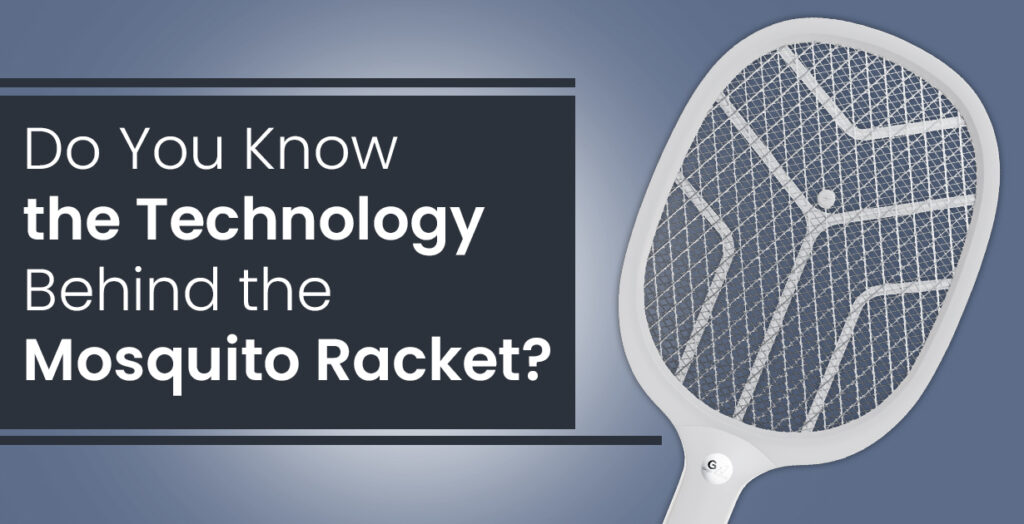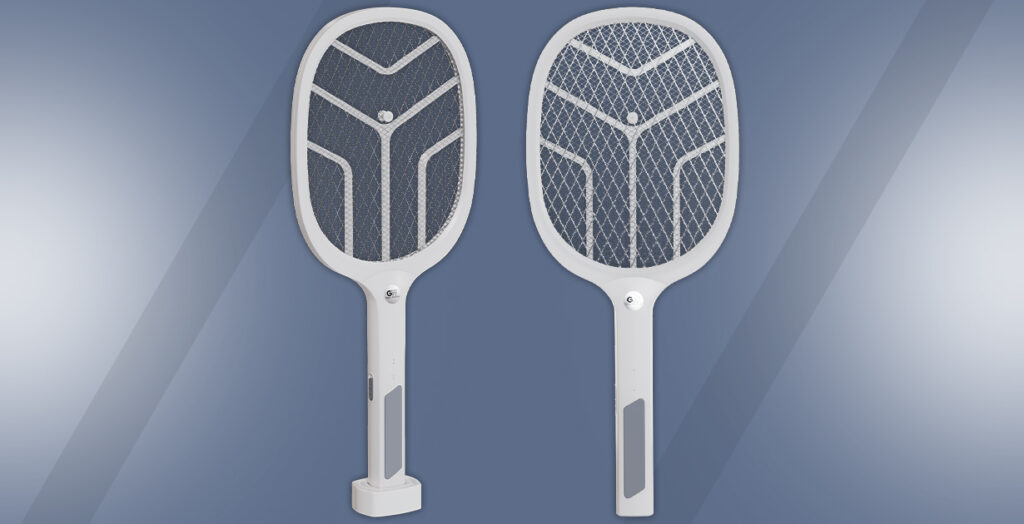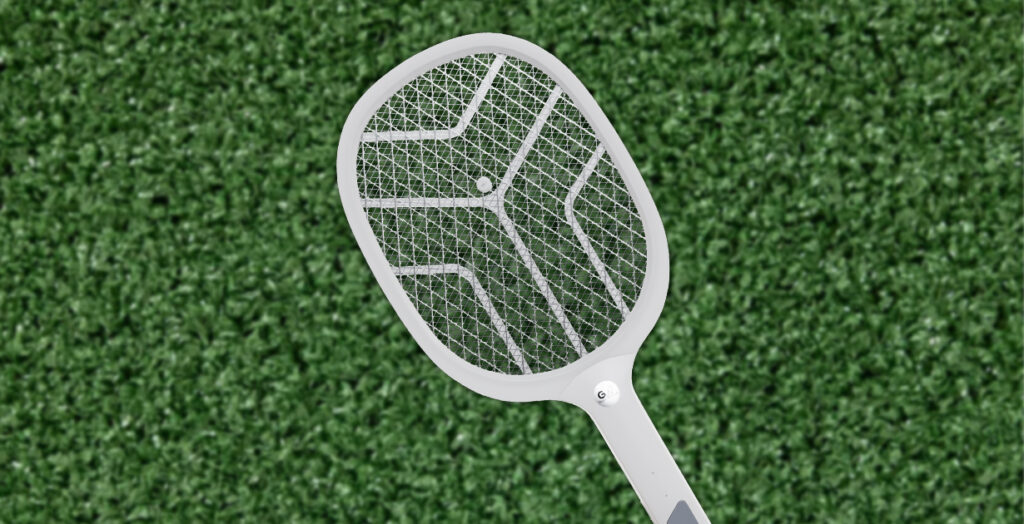
Mosquitoes are one of the most common pests found all over the world. Not only are they a nuisance, but they also carry diseases such as malaria, dengue fever, and Zika virus. To combat this problem, various mosquito control methods have been developed, and one such method is the mosquito racket. In this blog, we’ll explore how mosquito rackets work and the technology used to make them effective.
How do mosquito rackets work?
A mosquito racket is a handheld device that uses electricity to kill mosquitoes. It consists of a handle, a battery, and a mesh grid made of metal or plastic. When the racket is turned on, it emits an electric current that travels through the grid. When a mosquito comes into contact with the grid, the current kills it.
The technology used in mosquito rackets
The technology used in mosquito rackets can be divided into three categories: power source, electrical circuit, and mesh grid.
Power source:
Mosquito rackets are powered by batteries. The most common types of batteries used are AA, AAA, or rechargeable batteries. Some high-end mosquito rackets come with lithium-ion batteries that are more powerful and have a longer lifespan.
Electrical circuit:
The electrical circuit is responsible for generating the electric current that kills the mosquitoes. It consists of a transformer, capacitor, and a switch.
The transformer converts the low voltage from the battery into a high voltage required for the electric current. The capacitor stores the electric charge and releases it when the switch is turned on. The switch completes the circuit and allows the electric current to flow through the grid.
Mesh grid:
The mesh grid is the most important component of the mosquito racket. It is where the electric current flows and kills the mosquitoes. The mesh grid is made of either metal or plastic and is designed to allow the electric current to flow through it. When a mosquito touches the grid, the electric current flows through its body and kills it.
Types of mosquito rackets

There are different types of mosquito rackets available on the market, and they differ in terms of design and technology used. The following are the most common types of mosquito rackets:
1.Traditional mosquito racket:
Traditional mosquito rackets are the most common type of mosquito racket. They consist of a plastic or metal handle, a battery compartment, and a mesh grid. The grid is usually made of metal and has a zig-zag pattern that increases the chances of the mosquito coming into contact with the grid.
2. Rechargeable mosquito racket:
Rechargeable mosquito rackets are similar to traditional mosquito rackets, but they come with a rechargeable battery. This type of mosquito racket is more eco-friendly as it can be charged multiple times and does not require the constant use of disposable batteries.
3. UV light mosquito racket:
UV light mosquito rackets are a relatively new type of mosquito racket that uses UV light to attract mosquitoes. The racket has a UV light source that lures mosquitoes towards the mesh grid. When the mosquito touches the grid, it gets electrocuted and killed.
4. Electronic mosquito racket:
Electronic mosquito rackets are similar to traditional mosquito rackets, but they have an electronic sensor that detects the presence of mosquitoes. The racket emits an electric current only when a mosquito is detected, which makes it more energy-efficient.
5. Solar Mosquito Rackets
Gigawatts Solar mosquito rackets are another eco-friendly option that uses the power of the sun to charge the battery. These rackets feature a small solar panel that collects sunlight during the day and uses it to power the racket at night. Solar mosquito rackets are ideal for outdoor use and can be very effective at killing mosquitoes, but they do require a certain amount of sunlight to charge the battery properly.
Gigawatts Mosquito rackets are an effective way to control the mosquito population and keep them away from our homes and outdoor activities. The technology used in mosquito rackets is relatively simple, but it’s effective in killing mosquitoes. With the various types of mosquito rackets available on the market, it’s easy to find one that suits your needs and preferences. When using a mosquito racket, it’s important to follow the manufacturer’s instructions and use it safely to avoid any accidents or injuries.
What to consider when choosing a mosquito racket, and what are some of the best options on the market?

As we discussed in the previous article, there are several different types of mosquito rackets, including electric, rechargeable, solar mosquito rackets. Each type has its own unique benefits and drawbacks, so it’s important to choose the one that best fits your needs. For example, electric and rechargeable mosquito rackets are great for indoor use, while solar mosquito rackets are ideal for outdoor use.
- Effectiveness
The effectiveness of a mosquito racket is determined by several factors, including the voltage, the size of the mesh, and the overall design. Higher voltage rackets are typically more effective at killing mosquitoes, but they may also use up more battery life. A larger mesh size allows you to catch more mosquitoes at once, but it may also make the racket heavier and less manoeuvrable.
- Battery Life
Battery life is an important factor to consider when choosing a mosquito racket, particularly if you plan to use it for long periods of time. Electric and rechargeable mosquito rackets typically have a battery life of around 4-6 hours, while solar mosquito rackets can last up to 8 hours on a full charge. It’s important to choose a racket with a battery life that is sufficient for your needs.
- Design
The design of a mosquito racket is another important factor to consider. Some rackets feature a more ergonomic design that makes them easier to handle, while others may have a more stylish appearance. It’s important to choose a design that you are comfortable with and that fits your personal style.
Gigawatts Mosquito Rackets is leading in the Market:
Gigawatts brand mosquito rackets use electric current to kill mosquitoes on contact. When a mosquito touches the electrically charged mesh of the racket, it completes an electrical circuit and receives a lethal shock.
The effectiveness of gigawatts brand mosquito rackets in killing mosquitoes depends on several factors, including the quality of the product, the strength of the electric current, and the user’s technique.
Generally, if the racket is well-made and the electric current is strong enough, a single contact with the mesh can kill a mosquito instantly. However, if the electric current is weak or the mosquito only brushes against the mesh without completing the circuit, it may not be effective in killing the mosquito.
It’s not important for the user to be skilled in using the racket to effectively target and hit mosquitoes in flight. With proper technique, gigawatts brand mosquito rackets can be an effective and relatively inexpensive way to control mosquito populations in a given area.
 Need help? Call Us:
Need help? Call Us: 

